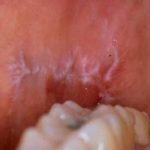
Oral lichen planus is thought to affect between 0.5-2% of the population with a predilection for middle-aged females. A number of different oral manifestation are seen, reticular, erosive, atrophic, and plaque type. The first report of an oral squamous cell carcinoma in a patient with oral lichen planus (OLP) was over 100 years ago and a number of studies and reviews have sought to clarify the rate of malignant transformation in OLP.
The aim of this review was to assess the malignant potential rate of OLP and the influence of associated risk factors.
Methods
Searches were conducted in the PubMed/Medline, Scopus and Web of Science databases. Observational studies of oral lichen planus malignant transformation were considered. Two reviewers independently selected studies and extracted data with study quality being assessed using the Newcastle -Ottawa scale. Only English language papers were included and those meeting strict criteria; (a) the presence of a properly verified OLP diagnosis, (b) a clear description of the cancerous lesion developing at the same site as the verified OLP lesion; and (c) a follow-up period of a minimum of 6 months prior to carcinoma development.
For analysis OLP was categorised into two main categories (a) white OLP, which includes reticular/papular, and plaque forms and (b) red OLP (irrespective of a concomitant presence of any other white forms) which includes atrophic (erythematous) and erosive (ulcerative) forms. The pooled proportion of the overall risk of OLP MT was calculated using random-effects model with pooled odds ratios (OR) and95% confidence intervals (CI).
Results
- 33 studies (31 retrospective, 2 prospective) involving 12,838 studies were included.
- The male: female ratio of patients was 1 : 1.89
- 151 of the 12,838 OLP cases reportedly progressed to malignancy (1.2%). Using the strict criteria above this reduced to 56 cases of malignant transformation (0.44%).
- Meta-analysis showed a pooled malignant transformation rate = 0.2% (95%CI; 0.1% to 0.3%).
- Data from a number of studies contributed to meta-analyses of a number of risk factors (see table below). The odds of malignant transformation was significantly higher for smokers, alcohol consumers, patients positive for HCV and for those with red OLP.
| No of studies | Odds ratio (95%CI) | |
| Female: Male | 13 | 1.03 (0.59 – 1.80) |
| Smoking | 8 | 4.62 (1.88 – 11.35) |
| Alcohol | 4 | 3.22 (1.02 – 10.13) |
| Hepatitis C virus (HCV) | 4 | 3.77 (1.14 – 12.52) |
| White v Red OLP | 9 | 0.37 (0.15 – 0.90) |
Conclusions
The authors concluded: –
Our results suggest that the reported OLP malignant transformation rates are exaggerated, and these do not reflect the actual clinical course of the disease according to strict clinical and histopathological criteria.
Comments
The reviewers have searched the same databases and also restricted inclusion to studies published in English as in an earlier review of this topic (Dental Elf – 17th Aug 2018). In common with the earlier review the majority of included studies are retrospective which raised potential issues in relation missing data items, selection and recall bias. Only 5 of the included studies scored highly on the NOS which may have implications for the certainty of the findings.
The earlier review included 21 studies compared with 33 in this new review. 13 of the studies are common to both reviews although only 1 of those in the new review was definitely published after the earlier review. As the authors indicate they are using a stricter definition of malignant transformation it is interesting that they have managed to identify more relevant studies than the earlier review. The 2018 review estimated the overall malignant transformation rate to be 1.4% which is close to the overall rate in this new review of 1.2% but much higher than their reported rate of 0.44% using their strict criteria.
Higher quality long-term prospective studies with using consistent diagnostic criteria and more detailed recording of risk factors are needed to help clarify the malignant transformation rate to assist in the clinical management of these patients is needed. .
Links
Primary Paper
Idrees M, Kujan O, Shearston K, Farah CS. Oral lichen planus has a very low malignant transformation rate: A systematic review and meta-analysis using strict diagnostic and inclusion criteria [published online ahead of print, 2020 Jan 25]. J Oral Pathol Med. 2020;10.1111/jop.12996. doi:10.1111/jop.12996
Other references
Dental Elf – 17th Aug 2018
Picture Credits
By James, Candice, Mai – http://bohone09.wikispaces.com/Group+1, CC BY-SA 3.0,
